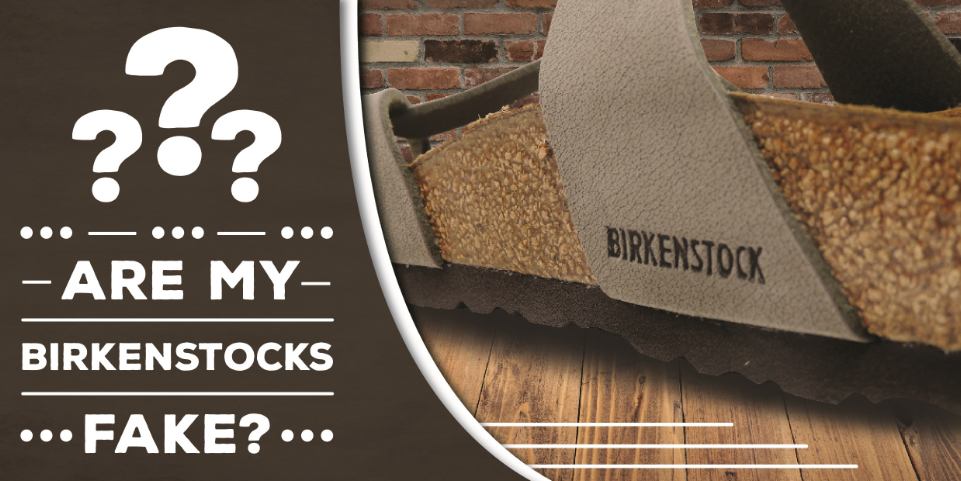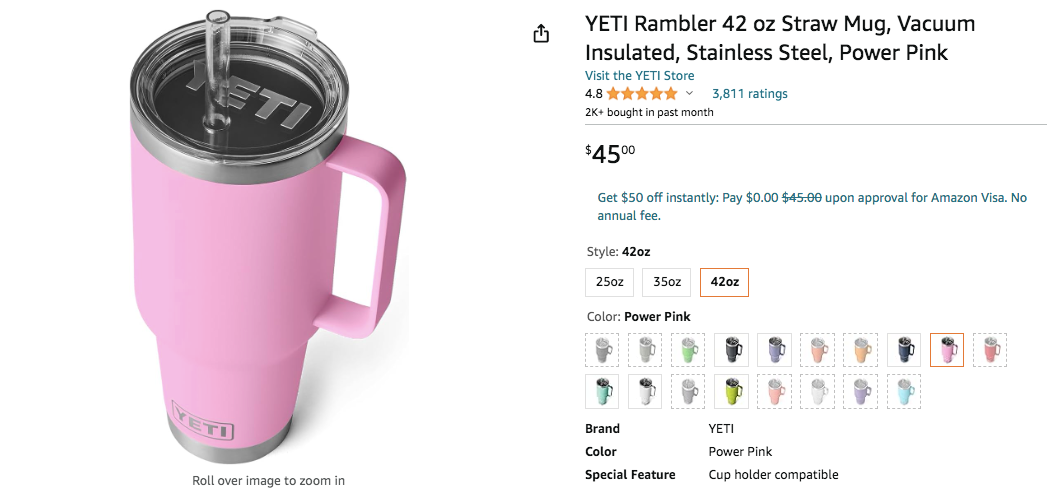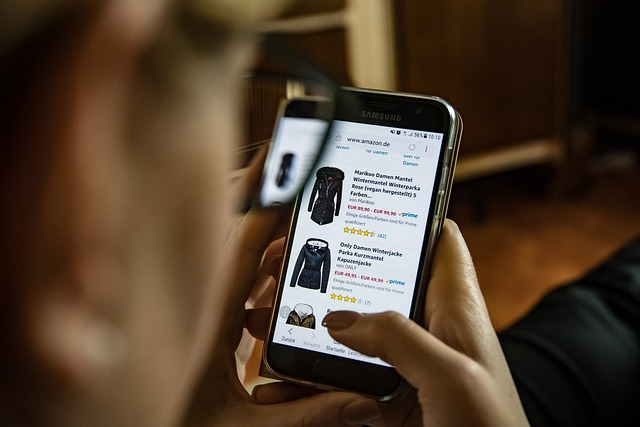Tackling Counterfeits: How Brands & Customers on Amazon Can Protect Themselves
In the vast expanse of online shopping, Amazon stands as a colossus, offering an almost limitless array of products. However, with this immense selection comes a significant challenge—the growing concern of counterfeit goods.
A striking example of this issue is illustrated by the 240-year-old brand Birkenstock, known globally for its iconic sandals. Birkenstock's confrontation with counterfeit and pirated goods on Amazon reached a critical point when the company noticed a surge of Chinese sellers offering its flagship Arizona sandal at $79.99, a noticeable $20 below the standard retail price.

In response, Birkenstock's CEO, David Kahan, decided to withdraw entirely from the global market on Amazon. This move was a significant statement in the e-commerce world that highlighted the challenges even established brands face in protecting their products against online counterfeiting on massive platforms.
Birkenstock's decision action served as a catalyst, crystallizing the urgency and importance for Amazon to intensify its crackdown on illicit trade in counterfeit goods. This moment underscored the pressing need for Amazon to enhance and implement more rigorous anti-counterfeiting measures, a topic we will explore in this blog.
Rigorous Seller Verification Process

A key preventive measure against counterfeits is Amazon’s thorough seller verification process. Before sellers can list their products, they undergo a comprehensive background check. This includes verifying their identity and business credentials by requiring them to provide details like bank account information, ensuring only legitimate companies are allowed to operate on the platform. According to one Amazon spokesperson, "In 2020, only 6% of attempted new seller account registrations passed our robust verifications process and listed products."
This rigorous authentication helps prevent anonymous or fraudulent sellers from listing counterfeit products under the identities of legitimate brands. Overall, this seller screening process is crucial to stopping fake goods at the source by weeding out potentially problematic merchants.
Brand Registry Program

At the forefront of Amazon's anti-counterfeit measures is the Brand Registry Program. This initiative is an invaluable tool for brands looking to combat counterfeit items and protect their intellectual property. By requiring a registered trademark, Brand Registry ensures only official brand owners can enroll in the program, creating a layer of protection against illegitimate sellers.
Once in the program, Amazon leverages the detailed brand information provided by companies, such as logos, trademarks, and product photos, to proactively scan listings and remove suspected counterfeit and pirated products before they reach customers. This greatly reduces the spread of knock-off products compared to a manual reporting process. Brands also gain more control over their product listings, can utilize powerful search tools to identify policy violators, have access to streamlined reporting of infringements, and receive hands-on support from dedicated Amazon teams.
With counterfeiting being a significant risk for legitimate businesses, Amazon's Brand Registry makes a strong effort to connect brands with the right tools and resources in its marketplace.
The Role of Automated Systems in Detection

Amazon harnesses the power of advanced machine learning and automated systems, meticulously monitoring over 8 billion product listings daily as a cornerstone of its anti-counterfeiting strategy. Kebharu Smith, a former federal prosecutor and now the director of Amazon's counterfeit crimes unit, emphasizes the critical role of data scientists and automated tools in this continuous scrutiny, explaining in a recent podcast how they "go after these counterfeiters at scale through using both internal Amazon data and external data to hold them accountable."
These sophisticated algorithms are designed to identify potential counterfeit products, using predictive analytics, computer vision, and natural language processing to meticulously compare logos and trademarks against brand-provided data regarding authentic goods.
This approach not only enhances the detection of fraudulent listings but also supplements the manual review process conducted by human experts. As these systems ingest new verification data, they evolve and refine their accuracy, forming an integral part of Amazon's layered defense mechanism against intellectual property theft and consumer goods that are produced illegally.
Product Serialization with "Transparency"

Amazon's Transparency program offers a high-tech solution to the epidemic of counterfeits through unique QR codes printed on every product enrolled in the program. By scanning these codes, customers can instantly verify authenticity and access detailed manufacturing information that builds trust in the purchase, while Amazon utilizes the data backend to proactively halt counterfeit goods before they reach the end consumer.
Specifically, each Transparency-enabled product receives its own alphanumeric authentication code that gets printed directly onto the product or packaging. Customers simply scan this code with the Amazon app after receiving their order. If the codes match up in Amazon's database, the customer can be confident they received authentic goods. Additionally, the scan provides traceability data like manufacturing date, location, and materials, offering unparalleled transparency from factories to your doorstep.
For sellers, Transparency supercharges anti-counterfeit efforts through this instant verification integrated into Amazon's fulfillment process. If a product slated for shipment lacks a valid Transparency code, Amazon will investigate and intercept the unauthorized inventory, stopping counterfeit goods in their tracks. This proactive, preventative approach blocks fakes early while also deterring counterfeit operations altogether.
Amazon's Test Buy Program

Amazon has a proactive system of randomized test purchases to identify counterfeit products being sold on their platform. Employees make sample buys of tens of thousands of products across a wide range of product categories and thoroughly inspect the items received to verify their authenticity. If the test buy determines an item is counterfeit or not as described, Amazon will take action against the seller, including potential account suspension to prevent further sales of fake products.
These ongoing test buys act as a deterrence, keeping sellers honest out of fear of the significant consequences of getting caught selling knockoffs. The chance of receiving a test buy also ensures sellers put proper quality control measures in place in their own supply chain. Overall, Amazon's test buy program is crucial to actively catching counterfeits that may slip past other defenses.
Project Zero: A Proactive Initiative

Amazon's Project Zero represents the next level of protection against counterfeits by empowering eligible brands with exclusive capabilities. Once enrolled, brands can instantly remove suspected knock offs without contacting Amazon, leverage expanded access to automated protections like proactive monitoring of over 8 billion daily listing changes, and even serialize product codes at the unit level to verify the authenticity of every order.
Over 22,000 brands are already using Project Zero’s robust toolbox to fight counterfeits. The program’s combination of self-service takedowns, amplified algorithmic scanning for signs of abuse, and unit-level trackability provides brands unprecedented control. These robust features enable brands to secure their products, safeguard their reputation, and provide customers confidence in buying genuine items. Project Zero reflects Amazon’s commitment to effectively combat counterfeiting at scale through automation and empowering brands with unprecedented responsibilities.
Harnessing Customer Feedback

Amazon pays close attention to customer reviews and feedback, using them as a barometer to detect potential counterfeit issues. By leveraging customer reviews and ratings, fake products are more likely to stand out with negative feedback if the quality does not match expectations for the brand. Complaints or negative reviews about product authenticity can trigger a more in-depth investigation. If a brand historically receives stellar feedback, a sudden shift to increased negative critiques raises red flags that something may be amiss, prompting Amazon to scrutinize those listings for potentially selling knock offs without buyer awareness.
In addition to this customer-driven approach, Amazon also facilitates a more direct line of action against counterfeits through its "Report a Violation" tool, available through Seller Central. Brands enrolled in Amazon Brand Registry can use this tool to report items that may be infringing on their intellectual property or registered trademarks. For rights owners who are not enrolled but hold an active registered trademark, Amazon encourages them to review the Brand Registry eligibility requirements and enroll. For those not eligible for Brand Registry, Amazon also provides a publicly available form for reporting alleged intellectual property infringements, such as copyright, trademark, and patent concerns. This system empowers both customers and brands to actively participate in the fight against counterfeits, further bolstering Amazon's efforts to ensure a marketplace free of counterfeit products.
Legal Action: A Firm Stance Against Counterfeiters
Amazon doesn't shy away from taking legal action against counterfeiters. If counterfeit rings or criminal networks are identified, Amazon will work jointly with law enforcement agencies and affected brands to investigate sources and takedown operations. In some cases, legal action can be taken against large counterfeiters—whether through civil litigation or criminal prosecution.

A prime example of this collaborative effort is the case of Amazon working alongside YETI, the popular cooler and drinkware company. In a notable legal action, Amazon and YETI jointly filed a lawsuit against counterfeiters who were selling fake, inferior-quality YETI Ramblers on the Amazon platform. This partnership illustrates a proactive approach in tackling counterfeit issues, where brands and Amazon combine resources and legal expertise to protect intellectual property rights holders and consumer trust.
Amazon provides support in these investigations and court cases to crack down on illegal organizations and send a strong warning to any other potential counterfeiting groups out there. Backed by Amazon's substantial resources and resolve, joint anti-counterfeiting efforts with authorities can effectively pursue justice. This firm legal stance serves as a staunch deterrent at the highest level.
The Enduring Counterfeit Problem

In the ever-evolving battle against counterfeit goods, Amazon has indeed ramped up its efforts, employing advanced technology and implementing various programs aimed at curtailing the spread of low-quality fakes on its platform. Despite these commendable strides, the system isn't foolproof, and instances of counterfeit products slipping through the cracks persist, underscoring the challenge in this digital age.
A notable example is the case of the ‘Ove’ Glove, a popular heat-resistant glove. Despite Amazon's measures, counterfeit versions of this glove, inferior in quality and safety, managed to infiltrate the marketplace. This situation not only highlights the ongoing struggle against counterfeit goods but also serves as a cautionary tale for consumers to remain vigilant to protect their health and safety too, even when shopping on reputable platforms like Amazon.
How to Spot Fake Goods on Amazon

Luckily, there are measures that customers can take on their own to protect themselves from counterfeit and pirated goods. Equipped with the insider tips below, shoppers can spot the warning signs, dodge counterfeit traps, and continue safely enjoying one-click convenience.
-
Be Wary of Third-Party Sellers
-
When possible, purchase directly from Amazon or verified sellers instead of third-party sellers you're unfamiliar with. Checking that the seller has the "Sold by Amazon" or "Fulfilled by Amazon" tag offers more legitimacy.
-
-
Scrutinize Listing Details
-
Look for clear, high-quality images, comprehensive product information, and signs of professionalism in the listing. Fuzzy pictures, sparse descriptions, and spelling errors can indicate that you are buying counterfeit products.
-
-
Research Prices
-
If the price seems suspiciously cheap for a high-end brand, it could be a fake. Do price comparisons for the product on other major retailers. Significant discounts may be bait for a counterfeit.
-
-
Read Reviews Carefully
-
Counterfeiters may create fake positive reviews. Carefully read the content looking for odd language usage, general vagueness, or repetition across reviews. Also, check if critical reviews mention receiving fakes.
-
-
Examine Product Packaging
-
When you receive the order, compare the packaging, branding labels, instructions, included accessories, etc. against the legitimate product. Subtle differences in fonts, colors, or materials can indicate a knock-off.
-
-
Verify Serial Numbers with Brand
-
The ultimate test—contact the brand with serial numbers on products or packaging to authenticate. If the brand doesn't recognize the number, it's clearly a counterfeit.
-
-
Trust Your Instincts
-
If a seller profile seems sketchy or product photos seem suspicious, lean toward caution and reconsider the purchase. Ensuring authentic products is worth finding alternative buying options.
-
By thoroughly investigating listings, comparing prices, scrutinizing details, and verifying serial numbers, shoppers can feel confident about spotting clever counterfeits hiding among Amazon's vast marketplace. When doubts arise, choose trusted sellers or official brand channels for guaranteed authentic purchases.
Taking Your Amazon Presence to the Next Level

As we've navigated through the intricacies of combating counterfeit goods on Amazon, it's clear that establishing and maintaining a legitimate and trustworthy presence on the platform is more crucial than ever. If you're a seller looking to enhance the credibility and appeal of your listings, or if you're seeking ways to ensure your products stand out as genuine and reliable, we're here to help.
Our Marketing by Emma team specializes in optimizing Amazon listings to not only elevate their legitimacy but also to maximize their visibility and appeal to potential customers. By reaching out to us, you can take a significant step towards safeguarding your brand's reputation and boosting your sales.
Don't let your products get lost in the sea of online offerings or be overshadowed by concerns of authenticity. Contact us today for a free listing analysis, and let's work together to showcase your products in the best light possible, ensuring they resonate with consumers as authentic, trustworthy, and worth their investment. Reach out now and let's elevate your Amazon presence together!

Leave a comment
Please note, comments must be approved before they are published